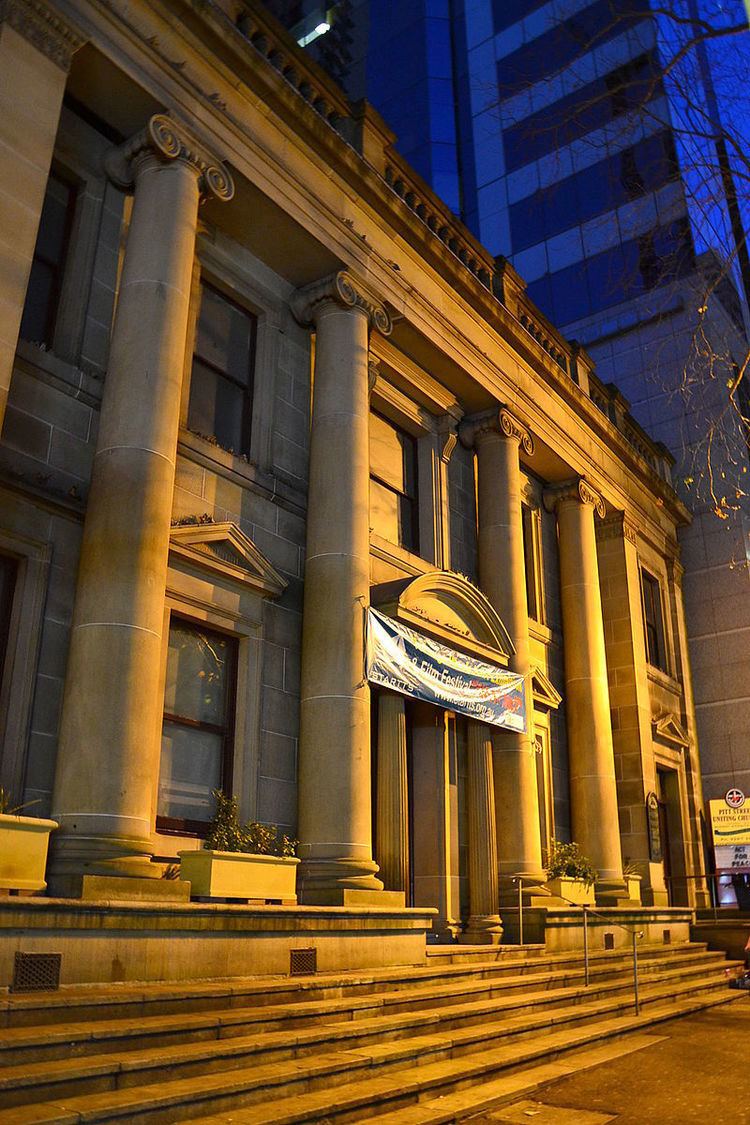Phone +61 2 9267 3614 | ||
 | ||
Address 264 Pitt St, Sydney NSW 2000, Australia Similar St James' Church - Sydney, St Andrew's Cathedral, Christ Church St Laurence, ANZ Bank Centre, Wynyard Park - Sydney Profiles | ||
Reverend ian pearson pitt street uniting church sydney
The Pitt Street Uniting Church is located in Pitt Street, Sydney, New South Wales. Founded in 1833, the congregation became the original church of Congregationalism in NSW.
Contents
- Reverend ian pearson pitt street uniting church sydney
- History
- The church building
- Historical figures
- References
History
The life of the congregation began when a church was founded on a nearby site in 1833. The foundation stone for the current building was laid in 1842 and took 4 years to complete. In 1846, the congregation moved to the new building, which was expanded in size and design in 1867.
The church was involved in debates on a number of social issues, especially education. It supported initiatives such as the establishment of the Sussex Street Mission, the Boys' Brigade and the YMCA.
In 1928, Church House (now Pilgrim House) was erected, as an early attempt to introduce an income earning space to support pastoral activities. Pilgrim House was constructed during a revival in the activities of the parish under the ministry of the Reverend T. E. Ruth. He promoted the idea that the parish should expand its role and its ability to earn income by the provision of both meeting rooms and rentable space.
In the 1960s there was a proposal to demolish the building. Jack Mundey and the Builders Labourers Federation responded to a plea by congregation members and declared a Green Ban on the project, thus saving the building.
By the mid 1970s, the small congregation, devoted itself to renewing the life of the parish and began restoring the church and Pilgrim House.
In 1977 it became part of the Uniting Church.
The church building
The exterior is an example of late Georgian Classical design. The facade to Pitt Street is sandstone, symmetrical with monumental Ionic columns rising through a two-storey, supporting cornice and balustraded parapet. Columns flank pedimented windows on ground floor and central door, with windows lighting the galleries above.
The building was designed by English-trained John Bibb (1810–1862) who in 1832 joined John Verge, one of the leading architects in Sydney, as an assistant. It was enlarged between 1857 and 1867, but the architect of this work is unknown. This included the internal galleries, resting on fluted iron columns cast by Dawson of Sydney, and the vestry to the rear.
During the 1960s the church fell into disrepair, but the loss of the building altogether was prevented by a ban imposed by the Builders Labourers Federation in 1973. Some basic work to bring the organ back into use was carried out in 1974 by Pitchford & Garside: in 1982 the firm commenced a staged restoration project with Kelvin Hastie as consultant and this was assisted by a NSW Heritage Grant.
Historical figures
Many prominent citizens of Sydney were associated with the church and the walls are covered with memorial plaques that give a commentary on the life of the church itself. Notable members of the congregation have included David Jones (founder of David Jones Limited), John Fairfax, Rev. John West and Rev. Joseph Coles Kirby.
